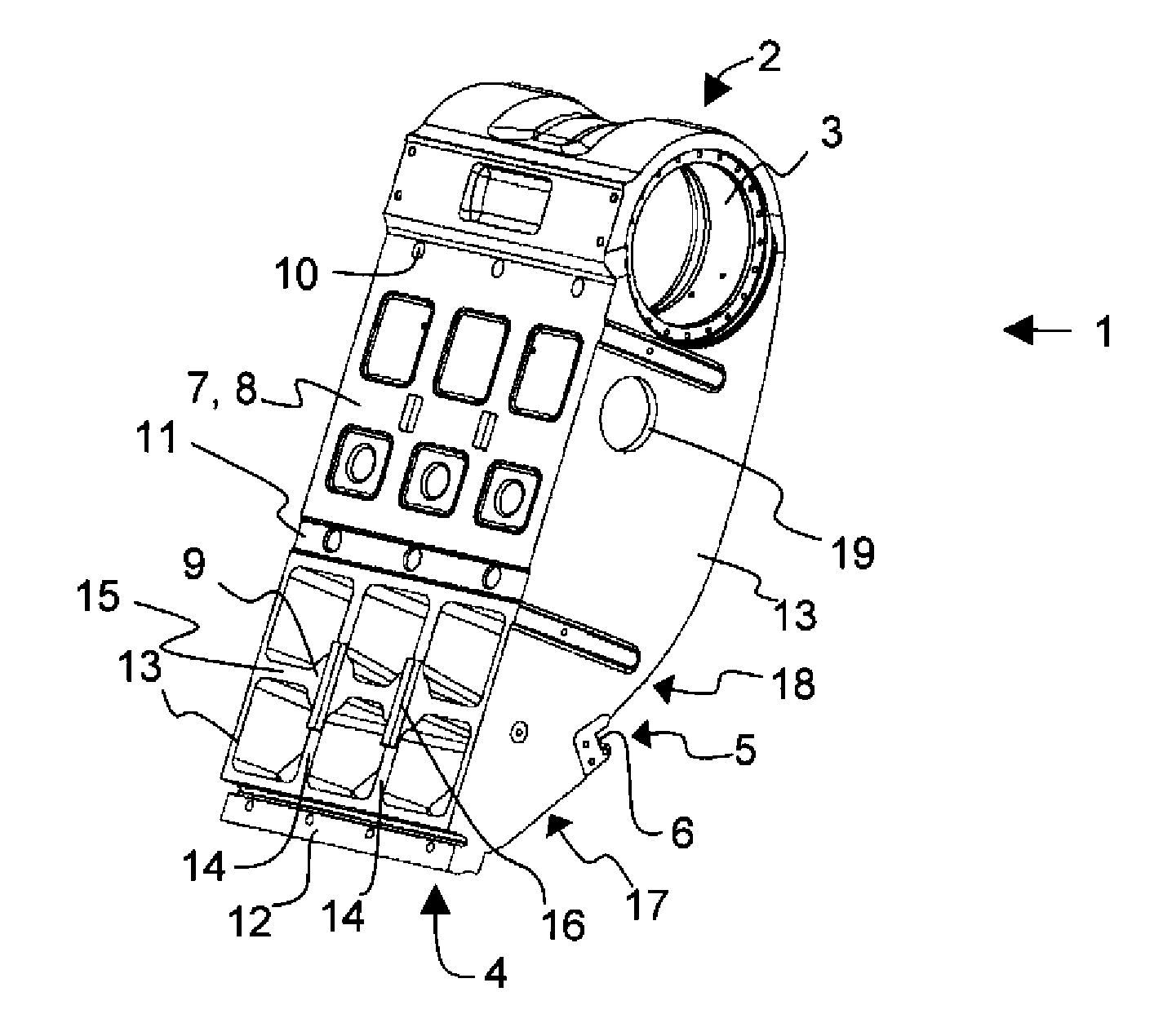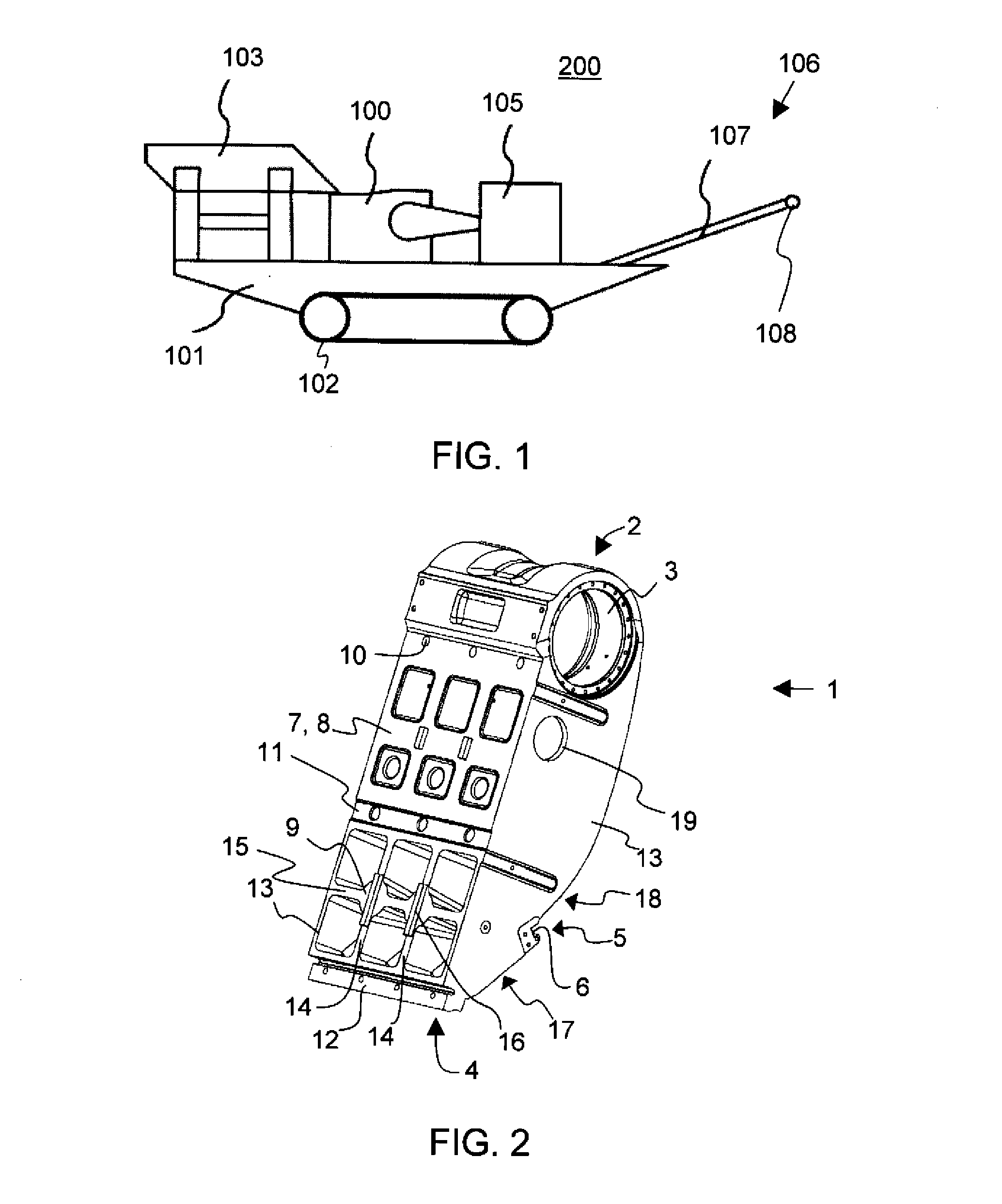Pitman of a jaw crusher, jaw crusher, crushing plant and crushing method
a technology of crushing plant and jaw crusher, which is applied in the field of pitman of a jaw crusher, a jaw crusher and a crushing plant and a crushing method, can solve the problems of increasing the cost and dynamic force, difficult to check and correct casting and quality errors in enclosed pitman, and bending of the pitman and the wear part, so as to reduce or remove the bending and distortion, the effect of eliminating bending and distortion
- Summary
- Abstract
- Description
- Claims
- Application Information
AI Technical Summary
Benefits of technology
Problems solved by technology
Method used
Image
Examples
Embodiment Construction
[0032]In the following description like reference signs denote like parts. It should be realized that the presented figures are not in scale as a whole, and they serve merely to illustrate the embodiments of the invention.
[0033]In FIG. 1, there is presented a processing apparatus of mineral material, a crushing plant 200 comprising a jaw crusher 100. In the crushing plant 200, there is a feeder 103 for feeding material into the jaw crusher 100 and a belt conveyor 106 for transferring crushed material further from the crushing plant.
[0034]The belt conveyor 106 presented in FIG. 1 comprises a belt 107 arranged to proceed around at least one drum 108. The crushing plant 200 also comprises a power source and a control centre 105. The power source may be for instance a diesel or electric motor, which provides energy to be used by process units and hydraulic circuits.
[0035]The feeder 103, the crusher 100, the power source 105 and the conveyor 106 are attached to the body 101 of the crushi...
PUM
 Login to View More
Login to View More Abstract
Description
Claims
Application Information
 Login to View More
Login to View More - R&D
- Intellectual Property
- Life Sciences
- Materials
- Tech Scout
- Unparalleled Data Quality
- Higher Quality Content
- 60% Fewer Hallucinations
Browse by: Latest US Patents, China's latest patents, Technical Efficacy Thesaurus, Application Domain, Technology Topic, Popular Technical Reports.
© 2025 PatSnap. All rights reserved.Legal|Privacy policy|Modern Slavery Act Transparency Statement|Sitemap|About US| Contact US: help@patsnap.com



